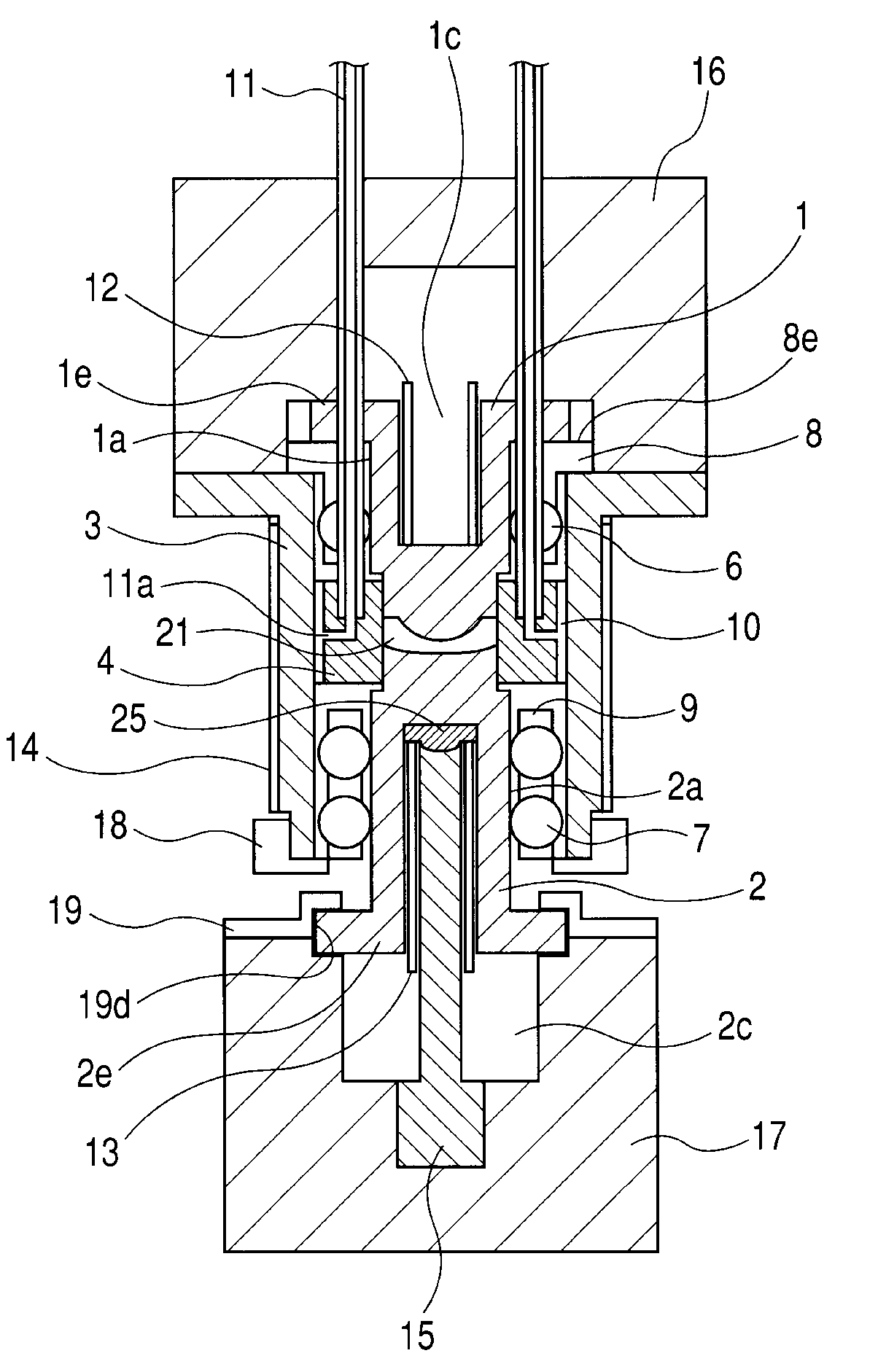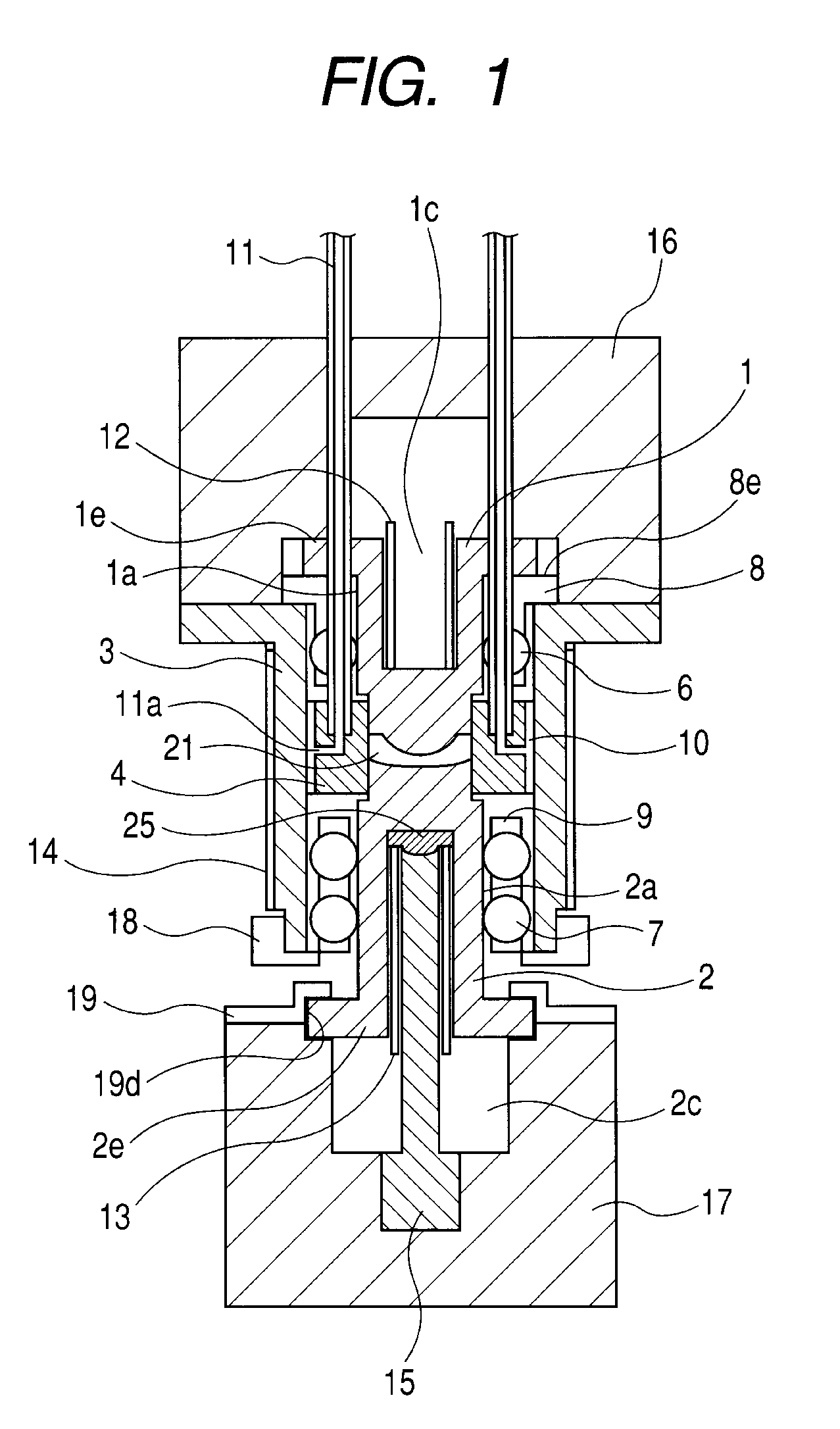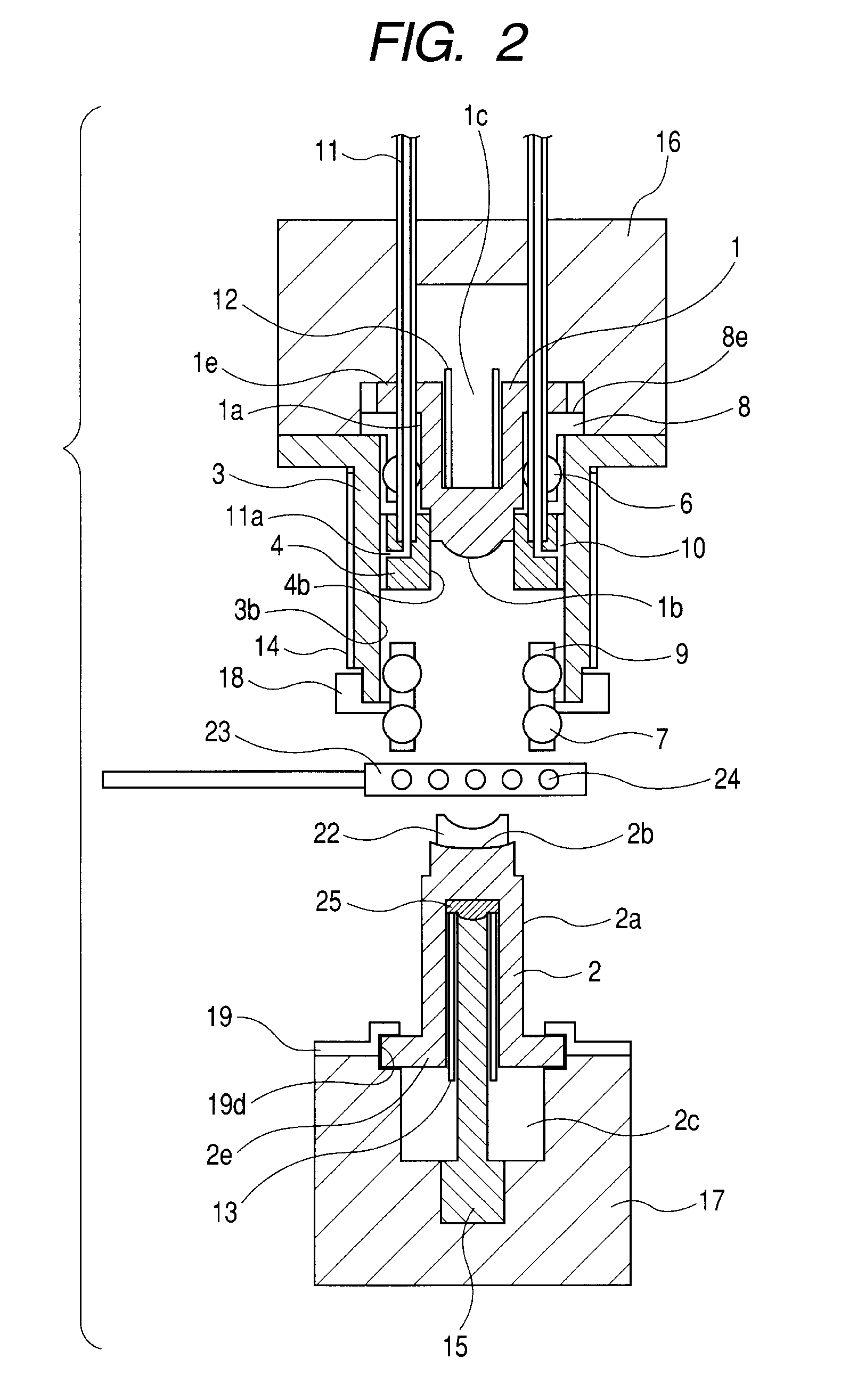Molding method for an optical element and optical element molding apparatus
- Summary
- Abstract
- Description
- Claims
- Application Information
AI Technical Summary
Benefits of technology
Problems solved by technology
Method used
Image
Examples
embodiment 1
[0018]An optical element molding apparatus according to Embodiment 1 of the present invention is described with reference to FIGS. 1 and 2. FIG. 1 illustrates a state in which upper and lower dies are closed after a pressing operation, and FIG. 2 illustrates a state in which the upper and lower dies are opened and the upper and lower dies prior to pressing and a glass material (material) are heated.
[0019]An upper die member 1 and a lower die member 2 constituting the upper and lower dies have cylindrical surfaces 1a and 2a, respectively. A guide member 3 supports a ring-shaped side die member 4. On a lower portion of the upper die member 1, there is formed a molding surface 1b for transferring a shape of an optical surface of an optical element to the glass material. Similarly, on an upper portion of the lower die member 2, there is formed a molding surface 2b. Further, on the outer peripheral surface of the molding surface 1b of the upper die member 1, there is formed a flat portio...
example 1
[0058]With use of the optical element molding apparatus illustrated in FIGS. 1 and 2, a lens used in a camera was molded. The procedure is described in detail.
[0059]A biaspherical concave meniscus lens was molded with use of a glass material having a transition point of 510° C. The biaspherical concave meniscus lens had a concave aspherical surface (approximate radius R: 5.5 mm) formed on the upper surface side thereof, in which an outer region to a region of 9.5 mm diameter exhibited a flat surface, and had a convex aspherical surface (approximate radius R: 40 mm) formed on the lower surface side and having Φ12.5 mm outer diameter and 1.6 mm center thickness.
[0060]Diameter of the cylindrical portions of the upper die member 1 and the lower die member 2 was set to Φ15.006 mm, diameter of the balls 6 and 7 was set to Φ6.35 mm, and materials thereof including that of the guide member 3 was superhard and had a coefficient of thermal expansion of 5.0×10−6 / kelvins (K).
[0061]Diameter of t...
embodiment 2
[0085]FIG. 3 illustrates an optical element molding apparatus according to Embodiment 2 of the present invention, in which a side die member 5 having only grooves 20 provided in the outer peripheral surface thereof is used in place of the side die member 4 in Embodiment 1.
[0086]Further, in place of the pipes 11, with use of pipes 31 and 32 constituting a temperature control unit, N2 gas is directly sprayed from the side surface direction of the guide member 3 onto the upper and lower retainers 8 and 9 so as to cool the balls 6 and 7.
[0087]With this, it is possible to cool the balls 6 and 7 more efficiently, and to change the flow rates of N2 gas to the upper and lower retainers 8 and 9, respectively. As a result, more strict control can be performed.
[0088]Further, the heater block 23 is not used at the time of heating, and heated N2 gas is caused to flow through the pipes 31. As a result, the balls 6 and 7 can be directly heated.
[0089]Herein, while examples of heating methods for th...
PUM
 Login to View More
Login to View More Abstract
Description
Claims
Application Information
 Login to View More
Login to View More - R&D
- Intellectual Property
- Life Sciences
- Materials
- Tech Scout
- Unparalleled Data Quality
- Higher Quality Content
- 60% Fewer Hallucinations
Browse by: Latest US Patents, China's latest patents, Technical Efficacy Thesaurus, Application Domain, Technology Topic, Popular Technical Reports.
© 2025 PatSnap. All rights reserved.Legal|Privacy policy|Modern Slavery Act Transparency Statement|Sitemap|About US| Contact US: help@patsnap.com



